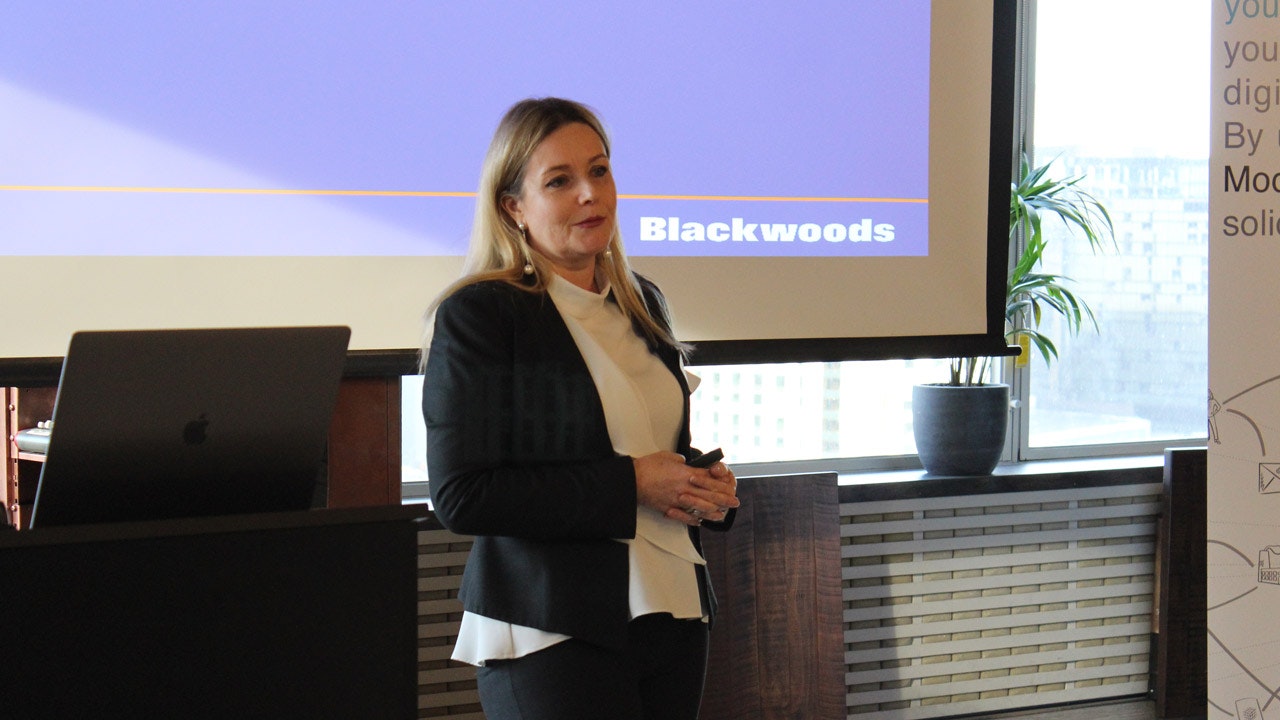“Had we had the information modelling technique when we started, we could have saved a lot of time”

After a long journey around the globe, I had the opportunity to present my thoughts and knowledge about information modelling in both Melbourne and Sydney as part of the foryouandyourcustomers Business Breakfast series. I very much enjoyed my stay in Australia. It is a country I imagine I could live in.
My colleagues in Melbourne and Sydney did a great job in organising the Business Breakfast Events (49th and 50th Business Breakfasts) and inviting a widespread mix of industry specialists and those eager to understand more about “The business value of information”. I faced a very interesting and interested audience. Several of the top companies of Australia were represented, with some flying in especially for the event.
Stefan Berner presenting the Information Modelling concept.

Through my presentation they learned how misunderstandings happen and how important it is for every person in their company to have a better common understanding of their own world. The simple but effective method of information modelling I developed and have applied in dozens of projects over the last 20 years, aroused interest. I very much appreciated the probing questions and feedback I received. It showed me that communication and generating a mutual, aligned understanding is a concern across languages, continents and cultures. In other words, we all are facing very much the same problems in our jobs. I most liked the question. “If the method of information modelling is so simple and so valuable, why hadn’t people started doing it a long time ago?”. That was the one question I couldn’t answer and I am still asking myself. Maybe it is the simplicity of the method which leads people to believe they don’t need something so simple.
My three co-presenters shared very interesting insights into the same topic across Melbourne and Sydney:
Daryl Sadgrove explaining Product Portfolio Management of Australia Post.

Daryl Sadgrove, Head of Product Portfolio Management at Australia Post, presented that Australia Post needed to get a deeper and more aligned understanding of their products and their performance. They developed a simple structure and started to communicate it across the organisation. He described their journey, including agreeing on common product definitions and performance rating criteria. That alone changed their way of seeing, talking about, and dealing with product related matters. It led to better decision making and to millions of dollars in increased revenue in a very short amount of time. Crucially, what had changed was that decisions could be made based on easily understood data. This in itself is a form of information modelling. They found their own way of doing it. I was impressed by what they had achieved in seven months.
Melissa Hayes speaking about information journey at Blackwoods.

Melissa Hayes, General Manager of Marketing at Blackwoods shared their story “Embracing an organisational ‘short straw’ to unlock a hidden ‘oil’ in product data.” She presented in Melbourne and described how Blackwoods undertook their own product information journey. With the help of the MDM platform from Stibo Systems, they built a master data management system for products (called a Product Data Lake). They gained visibility into their data quality and completeness issues, which they started remediating at scale with the help of Stibo’s MDM platform. It also led to key initiatives such an in-house Image Studio and Supplier Portal capability being implemented; both of which provide high quality data as close to the source as possible. This undertaking changed their culture and their ways of doing things which in turn resulted in better decision making based on higher quality data.
Jonathan Moeller explaining the Exploded View.

Jonathan Moeller, the Swiss founder of foryouandyourcustomers, shared his thoughts on “How can companies use information to create knowledge and success?”.
He explained that Leonardo Da Vinci invented cross-sections or “exploded views” showing the functioning of machines. This inspires our Exploded View tool which helps to show the functions of a company, organisation and interaction with their customers as cross-sections. That enables understanding of how changes such as implementation of a new system, need to be considered across all layers of the company. Consideration of that data being key to enabling system and organisation capabilities to be realised.
Jonathan Moeller explaining the Exploded View.
For me, and I believe also for the audience, it was great to see, how “my” information model fits in perfectly as a well-established method for analysing and improving companies in various areas. The practical experience from the other presenters confirmed my claim that “real improvement comes from people understanding each other and working together in an efficient way”.
One visitor said afterwards “I was impressed about the open-mindedness of Daryl (Australia Post) to talk about the realities they have in their business, the presentations were very special and interesting”, so Hitatchi Vantara. Another added “Today’s presentation was very valuable and thought provoking about the need to invest time in future thinking. We really liked it and would like to learn more”, so Sonepar.
After the conclusion of these successful series of presentations, I look forward to coming back to see how the seed I have sown grows and helps Australian companies on their digitalisation journey.
Interested in information modelling? Contact our specialists in Australia. Or find out more in my whitepaper.
